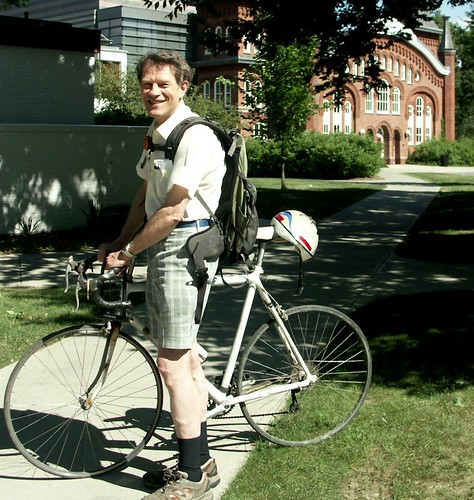Ed Lynch remembers locations and events along Casperkill
July 8, 2010 by admin
Ed Lynch has lived on College Avenue since 1979. Before that, he lived in the Wappingers Creek area, where he canoes even today. As a longtime area resident, Mr. Lynch remembers many of the events that we have written about on this blog.
While attending middle school in what is today Arlington High School, Mr. Lynch recalls watching smoke rise from the Burnett Boulevard Extension Site. At the time, the area now occupied by the Rt. 44 and Dutchess shopping plazas used to be a dump site. Fires would burn there every once in a while, and sometimes the fire department had to be called in.
He also remembers skating on Vassar Lake in the early 1960’s, during a snowless winter which brought the lake surface to a “glassy smooth” freeze. His proximity to the college also means he remembers the 1997 sewage spill, which had a fatal effect on much of the wildlife in Sunset Lake:
I walk on campus at literally all hours of the day and my loop generally goes down College Avenue, down by Kenyon, and then Wimpfheimer, and then down by the golf course and back. And from time to time I’ll notice things that I think I should bring to the attention of someone. Well, in this one case I didn’t because it was so obvious, I figured I didn’t need to say anything. I was walking down the hill by Kenyon, and I’m smelling sewage. It really doesn’t smell good it all. But it’s so bad, somebody must know about it. So I never said anything. Then I find out a few days later that there was a sewage spill of some sort and all the fish in Sunset Lake are dead.
Mr. Lynch also has a longstanding connection to the Vassar Farm. He has mountain-biked all the trails on the Preserve, and has been an active member of the Poughkeepsie Farm Project since it started twelve years ago:
A big part of it is food justice and environmentally conscious farming techniques: mulching, composting, turning crops at the right time, planting in ways that would tend to mitigate pests. Like when I was picking my peas the other day I had to work my way through some oats. Asher (from the PFP) indicated that maybe they tossed in maybe a few more oats than they should have, but there was supposed to be some symbiotic relationship with the oats and keeping some pest out of it. They have school classes come and they give demonstrations and show them what’s going on at the farm. Then they have city seeds, which is a program for kids from the city, where they actually grow plants ‘til the end and then they go to seed and actually package the seeds at the end of it. They do all sorts of really neat things there. And it’s a cooperative sort of thing, so part of your membership is some amount of time helping with the harvest or other jobs. Up until the end of December last year I was the membership coordinator for six years. And I always go pick up my vegetables by bicycle.
Even before becoming involved in the PFP, Lynch’s family had several small parcels in the Vassar community gardens, going back to the late 1960’s:
My mother was the assistant director of food service during the years that Vassar ran their own food service. They even had an on-site bake shop. This was before ACDC and each dorm had its own dining hall. She was also in charge of all the catering on campus. At that time, the garden plots were only open to the Vassar community and it was free. Eventually they added a small charge to have some manure plowed under in the spring. The community gardens are probably about 3 times the size now than they were back then and I believe a little more open to non Vassar gardeners.
Lynch can recall aspects of the farm that are no longer in existence. Like the grassy slope to the right of the farmhouse (now completely forested), down which students used to sled; or the horse barn, where his former neighbor kept his horse. Years ago, he even used to collect water from a spring that feeds into the Casperkill. That was before there were constructed ponds on the Farm.
Lynch also remembers what Raymond Ave looked like before the 1964 reconstruction:
I remember the road being just a two-lane road and there being these gorgeous, monstrous trees on both sides. And you’ve probably seen information about those all being cut down to go to the four lanes. But at the time there was quite a dip and a little bit of a nasty curve right there at the outlet of Vassar Lake and a great big tree in that curve. And the reason it’s of significance to me, is that one of my high school friends’ brother had a car accident there. I know the newspaper article said something about the Vassar guard at the main gate, you know, hearing a car going by fast. I don’t know if he heard screeching brakes or if he heard the crash when the car hit this tree. The passenger died from the accident. I couldn’t tell you what year. That’s got to be before 1964 anyways. So that was a very different contour than it is today.
One of the main changes Mr. Lynch has noticed in the area has been the overabundance of deer and how they’ve “completely cleared out the understory on the Farm property, and everybody else’s property, too.” Regarding the January 2010 deer culling, Lynch notes that “Vassar wasn’t the first, but Vassar raised a lot of fire by becoming public.”
